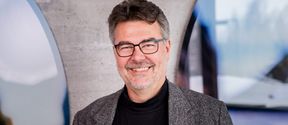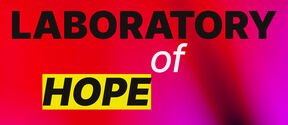At the beginning, at the routine level, people project their own ways of seeing things. Listening is based on one's own assumptions and learning nothing new. Otto Scharmer talks about downloading, which only reinforces one's own embedded thinking patterns and static perceptions of things.
As a community is facilitated to move down one side of the U to the bottom of the U, the mind, heart, and will are opened during the process. The most valuable resource during this process is the ability to listen and perceive new things.
Four levels of listening facilitate this process of opening for new. Instead of the level of (1.) downloading, one should strive towards listening on (2.) the factual, (3.) empathic and (4.) generative levels. The last form of listening is the best way for creativity.
At a routine level, one typically first moves towards an open mind. This means co-operation in a visible world, dominated by logical-rational thinking, numbers, and measurement, and it is the traditional world of research and decision-making. At this level, listening is real listening to the views of others and letting go of your own fixed opinions and ways of thinking. Things are understood more intellectually. Clear ideas are generated and, for example, an intellectual debate on technical issues can take place. Problems are primarily solved only at the level of reason, and the community acts based on facts and research data.
It is worth continuing towards the level of the open heart, which represents the interface between the visible and the invisible world. Emotion and intuition will complement logical thinking and reasoning. The mode of operating changes and measuring with numbers becomes difficult. At this level, community members listen and hear what others are saying and feel compassion for each other. Listening is empathetic dialogue, and the attention shifts from the listener to the speaker. Interpersonal resonance intensifies and new shared meanings start to emerge. This generates deep, multi-level connections, and many can sense an invisible ‘social field’ that emerges.
The deepest level, the open will, represents a completely invisible world. In this open state of mind listening is generative: all the different sounds of the entire system are being listened to. This state is difficult to describe with linear language because it is a state of being where everything slows down and there is access to inner and collective wisdom. In group dynamics, this space is called synergy, in interpersonal communication it is called flow or unity. This stage requires courage, as many may feel like losing their own meaning or status.
Transformation requires courage to let go of the old
At the lowest point of the U is the Source, where thinking is paused, one is “below” its own will, and sensing the collective will. In Theory U, this stage is called Presencing. Pausing creates a connection to something bigger and deeper than yourself. Without pausing and connecting, one always acts based on its own interest.
There are three ‘voices’ that prevent individuals and communities from going to the deep stages of activity of Theory U.
- Voice of Judgement shuts off the creative mind. The sound protects the heart and does not want to go deeper. Curiosity kills the desire to judge, as curiosity and judgment do not thrive in the same state.
- Voice of Cynicism closes and distances heart and generates hopelessness. The opposites of cynicism are hope and the ability to be vulnerable.
- Voice of Fear closes the mind that is afraid of losing things or being ostracized. It takes courage to defeat it.
Collective pausing occurs by letting-go of the old and insignificant (of our old ego and self) and allowing a new ‘spark’ and matter to come. There is a subtle connection to a deeper source of knowing and the highest potential, our best future Self. One recognizes that something (in itself and in the community) is beginning to move to another position or place. What needs to happen emerges. The community joins an invisible field and a collective purpose in which everyone can participate begins to become visible through doing things together.
Otto Scharmer and his colleagues have observed that once a group crosses this subtle threshold, nothing remains the same, energy level and sense of future opportunities of the group rise. Things are starting to happen as if by themselves, and the future is starting to take shape.
The last two stages are on the right arc of the U-curve. In the co-creation phase, the group improvises and develops prototypes that can also fail. Failures are encouraged because they help us to learn more about future solutions. In the final co-development phase, something new is adopted and it finds a place in ‘ecosystem’ and helps the community to act together.
Different leadership capacities
The intentional application of this five-step process can be described as participatory leadership. It allows us to find and create novel solutions to problems we have never encountered before. The Presencing Institute and the Art of Hosting community have developed tools and methods for this process to succeed.
Theory U: Seven Leadership Capacities:
- Holding the Space of Listening
- Observing
- Sensing
- Presencing: The capacity to connect to the deepest sources of self
- Crystallizing
- Prototyping
- Co-Evolving
Aalto University pilots U-theory in a competence development project in the spring of 2022 with the Presencing Institute. We cannot solve wide-ranging sustainability challenges with the same tools as before. Therefore, it is useful to practice skills that help us to perceive reality as a living system and to find more creative ways to collaborate. Aalto experiments with how to give space to other modes of knowledge besides rational reasoning.
Routine breaking experiments and new capabilities for creativity and sensitivity help to build a culture of radical creativity and transformative learning.
Embodied intelligence, intuition, and empathy are forms of knowledge that are more inclined to recognize invisible systemic factors and dynamics.
Do we learn to pay attention to the messages of our body before we do anything important together? Do we learn to understand the connection between thoughts and body feelings? Do we learn to deepen our reflection and act more consciously? For example, these questions can help to approach the potential or latent capabilities that allows us to find system-level solutions to sustainability problems.
Text: Maria Joutsenvirta
PhD (Business & Economics), Learning designer
This article is based on the materials of the Presencing Institute. More information can be found on the institute's website:
www.u-school.org















